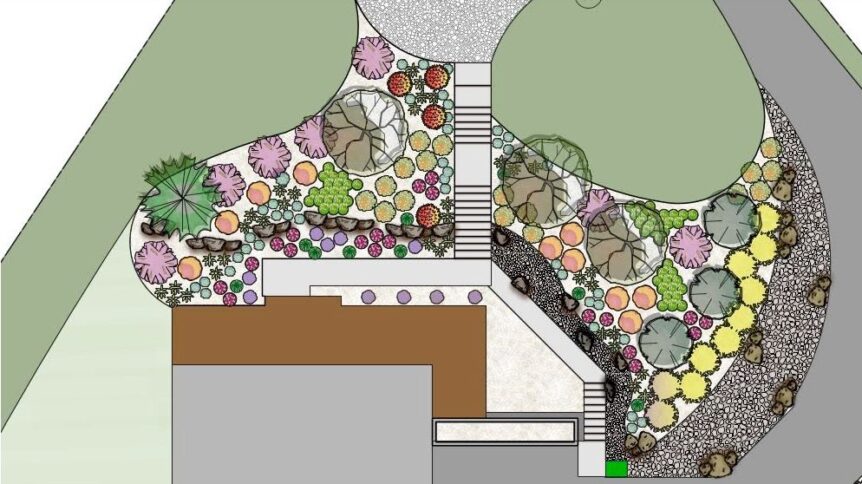Do you like to plant with themes, inspirational boards, or color palettes? So do we.
Creating a complementary color palette for landscape garden design can enhance the visual interest and appeal of your outdoor space. We often use this strategy with new landscape designs. Complementary colors are colors that are opposite each other on the color wheel, and when used together, they can create a vibrant and harmonious look.
Here are some of the steps we follow to when developing color palettes for our designs:
-
Determine the dominant colors of your landscape:
- If working in a pre-existing garden, we look at the colors that are already present in your landscape, such as the colors of the soil, plants, and hardscape features. These will be the foundation for your color palette.
-
Choose the complementary and tertiary colors.
- Once we have identified the dominant colors in your landscape, we look at options for complementary color. For example, if your landscape is dominated by green hues, the complementary color would be a reddish or purplish hue. To create a more complex and nuanced color palette, we select options for analogous (tertiary colors) which are colors that are adjacent to each other on the color wheel. These colors will complement the dominant and complementary colors and add depth and interest to your design.
-
Factor in the season, lighting and usage.
- When choosing your garden’s colors, it’s important to consider the season and lighting of your landscape. For example, warm colors like red and orange work well in the fall, while cool colors like blue and green work well in the spring and summer. Bright flowers may look more vibrant in direct sunlight, while cool-toned stones may appear darker and more subdued in the shade. Choose plants and materials that will complement the lighting conditions in your landscape and help create the desired atmosphere, especially if this part of an entertainment space.
-
Plan for changes throughout the year:
- Remember that the lighting conditions in your landscape will change throughout the year, so plan for these changes when designing your outdoor space. For example, you may need to adjust the placement of outdoor lighting fixtures or the selection of plants to accommodate changes in the angle and intensity of the sun.
-
Confirm plant compatibility.
- It goes without saying, that we don’t just incorporate plants into a design based on color alone. Before we put any plants in the ground we want to confirm the location, moisture, sunlight and plants work together in the proposed garden beds. And that there is mixture of height, depth and texture to any garden.
The key is finding the right balance between contrasting and harmonious colors to create a visually appealing and cohesive design. Strategies like this take the overall aesthetic to your home to a whole new level.
We’d be glad to help freshen up your existing landscape or even create a brand-new landscape design for you. Schedule an appointment here with on of our experienced designers to get started. Serving Harford, Baltimore and Cecil Counties, we are well-known as a one stop shop team for high quality landscape design and build.

